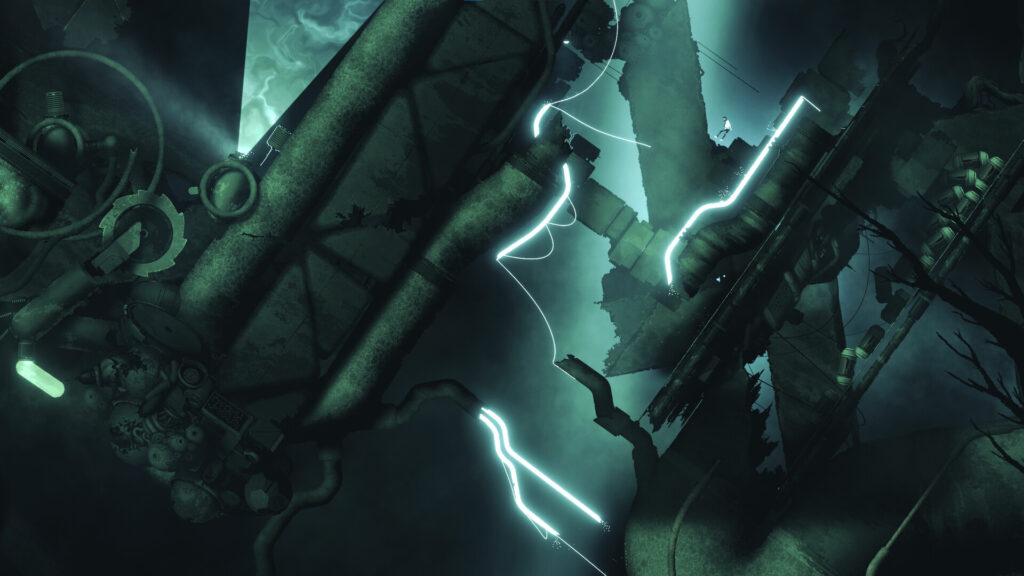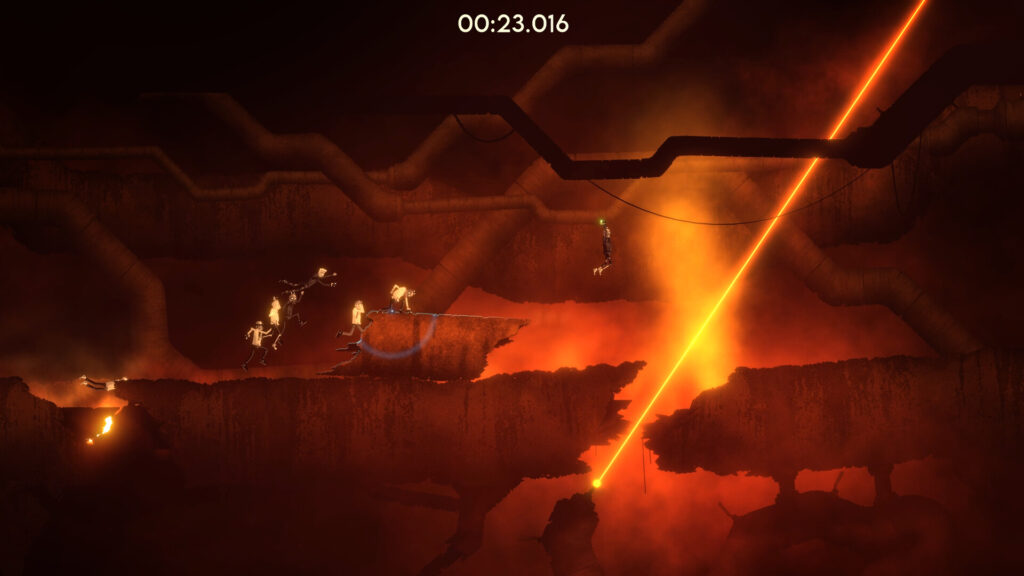Every so often, a platformer comes along that doesn’t just challenge your reflexes—it flips your expectations on their head. Bionic Bay, from the Finnish-Taiwanese duo of Psychoflow Studio and Mureena Oy, is one of those games. Published by Kepler Interactive, it’s a 2D sci-fi puzzle-platformer built on one core question: what if you could swap places with objects—and sometimes enemies—in real time?
From its striking pixel-art visuals to its mind-bending mechanics, Bionic Bay isn’t just chasing the shadow of Limbo or Inside. It’s carving its own space in the genre—with tighter controls, faster pacing, and a surreal biomechanical world that’s as deadly as it is fascinating.

🌀 Swap, Dash, Explode (But Do It Gracefully)
The central hook of Bionic Bay is the “Swap Mechanic.” With a press of a button, you can instantly trade places with nearby objects—be it a chunk of debris, a block of metal, or a flaming explosive barrel (yes, sometimes with hilarious consequences). This core idea never stops evolving. Early on, it’s just a cool way to solve puzzles. Later, you’re swapping mid-jump, dodging death, or flinging an object into a trap while teleporting to safety yourself.
Pair that with reactive, buttery-smooth physics and platforming movement that honestly rivals Celeste or Super Meat Boy, and you’ve got a playground where every jump, dash, and swap feels precise. If you’re using a controller—and you should—you’ll immediately feel how intentional every motion is. You’re not fighting the controls here. You’re dancing with them.
And you’re going to die. A lot. But thanks to generous checkpoints and lightning-fast respawns, it never feels punishing. In fact, most deaths are just… funny. The gibbing system turns each mistake into slapstick, which lightens the mood without undercutting the challenge.
🌌 Biomechanical Beauty
Visually, Bionic Bay hits a rare sweet spot: gritty, high-density pixel art that still reads clearly during high-speed sequences. The environments are full of alien technology, broken machinery, glowing relics, and unsettling life forms. It has that “old lab gone wrong” feel—think Half-Life meets Inside—but the presentation never feels derivative. There’s mystery in every corner, and the shifting palette across biomes keeps things feeling fresh.
The soundtrack is atmospheric without being overbearing. Industrial ambiance, synth swells, and subtle audio cues build a palpable tension as you explore. The sound design doesn’t shout—it whispers, and it’s all the more immersive for it.

📜 A Story Told in Silence
There’s no dialogue here. No exposition. No text dumps. You’re just dropped into this bizarre world and left to piece together the “why” and “how” through environmental clues. It’s classic show, don’t tell, and it works. You’ll catch glimpses of failed experiments, flickering monitors, and strange organic machinery that hint at a deeper lore—but it’s all background noise to the real focus: gameplay.
If you’re looking for a heavily scripted narrative or voiced cutscenes, this isn’t the game for you. But if you enjoy exploring a story through tone and setting, Bionic Bay rewards your curiosity.
🏁 Built for Speedrunners, Loved by Everyone
Every level in Bionic Bay is meticulously designed with one eye on speedrunning. Whether you care about global leaderboards or not, you’ll notice the flow: multiple paths, shortcut opportunities, and skill-based skips that reward creative movement. The online mode lets you race ghosts of other players, customize your scientist avatar, and climb the competitive ranks through regularly updated events.
Even if you never touch that side of the game, the level design benefits everyone. It’s fast, tight, and consistently inventive. New mechanics are introduced steadily and never overstay their welcome. It doesn’t just remix the same gimmicks—it constantly expands the ruleset.

✅ What Works
🔹 Flawless Controls & Movement
Analog control, wall jumps, air dashes—every input is tight, fast, and responsive. Platforming feels good every second.
🔹 The Swap Mechanic
A genuinely fresh gameplay concept with endless room for puzzles, traversal, and chaos.
🔹 Smart, Layered Level Design
Compact, challenging levels that introduce new ideas, build on them, and move on before they wear out.
🔹 Art & Atmosphere
A biomechanical world that’s both grotesque and beautiful, backed by elegant sound design.
🔹 Fast Respawns & Checkpoints
Die constantly, laugh hysterically, and try again in seconds. This is how tough platformers should handle failure.
🔹 Speedrun-Ready
Leaderboards, ghost races, and a game structure designed for repeat mastery without artificial bloat.
❌ What Doesn’t
🔻 Occasional Visual Clarity Issues
Some foreground/background elements blend a bit too well, causing rare confusion mid-jump.
🔻 Minimal Narrative Delivery
If you’re looking for a story-rich experience or lore dumps, you’ll find Bionic Bay light on that front.
🔻 Controller Strongly Recommended
Mouse/keyboard support exists, but it’s clearly not the intended input method—expect frustration without analog control.
🔻 Short Runtime for Some
The game doesn’t overstay its welcome—but if you’re not into speedrunning or 100% completion, you might wish for a few more hours of content.
🧪 Should You Play It?
Absolutely. If you have even a passing interest in platformers or puzzle games, Bionic Bay delivers a refined, clever, and frequently exhilarating experience. The physics and control fidelity alone are worth showing off, but the world, art, and constant mechanical reinvention elevate it far beyond genre filler.
💸 Should You Buy It?
Yes, and probably sooner rather than later. At its current price point, Bionic Bay feels like a steal. It may not have mainstream buzz, but this is a game destined to become a hidden gem for fans of games like Inside, Celeste, and Dead Cells. It’s polished, rewarding, and endlessly replayable for those chasing mastery.
Bionic Bay: More than just a stylish indie platformer, Bionic Bay is a blueprint for how to evolve 2D design in 2025—tight controls, physics-driven mechanics, and an atmosphere so thick you can swap into it. – ColdMoon


